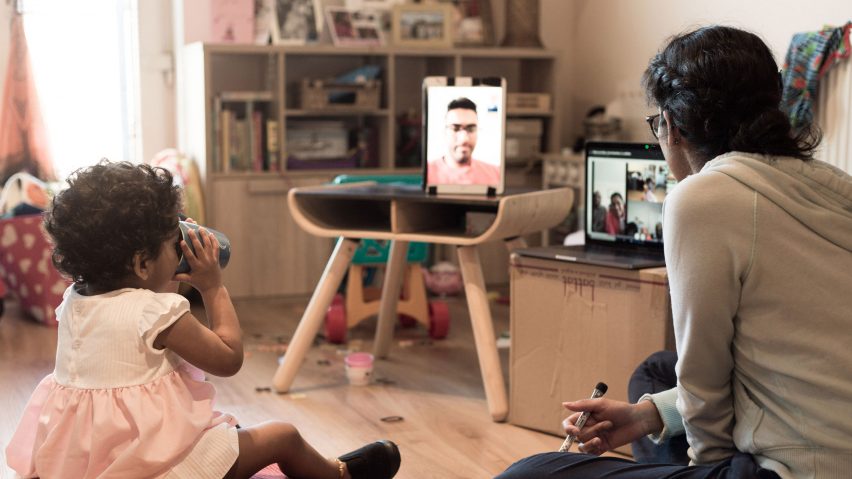London's Museum of the Home has launched a UK-wide project that calls for members of the public to submit photos and personal accounts of their living experience during the coronavirus pandemic.
Stay Home invites people to share up to five images of their lockdown living quarters, and asks them to answer seven questions about how the health crisis has altered their mental, physical and emotional attitudes towards home.
Submitted images so far capture the quotidian routines of lockdown, including people enjoying meals with loved ones via video calls, children painting rainbow posters to show appreciation for the NHS, and messy bedrooms and kitchen tables that have been turned into impromptu desks for working from home.
Some photos show cheery scenes, like a young girl feeding her pet chicken, while others nod to darker moments of the pandemic – one image shows a handwritten "no-entry" sign that's been put up in front of a basement, possibly warning of an infected family member.
The project was initially tested out by the Museum of the Home's staff – who are said to have found the process "cathartic" – before launching officially on the BBC's Culture in Quarantine platform.
"Although a photograph can tell a thousand words, we also felt it was important to have written and audio testimonies alongside these images in order to capture a candid picture of what life at home in the UK looks like under current conditions of confinement," said Tamsin Ace, director of creative programmes and collections at the museum.
"We have found that people are very open to share their experiences and are excited to have the chance to be part of a unique historical record of home life at a time of self-isolation and social distancing," she told Dezeen.
Diverse areas of society are being encouraged to participate in the project – from city dwellers to people residing in the countryside, key workers, those living alone, and parents who are having to achieve the tricky balance of childcare and work.
Selected entries will be displayed as part of the museum's permanent Documenting Homes Collection, which chronicles the ways in which people have lived in the UK over the past 100 years.
"The Museum of the Home has been collecting personal testimonies and objects from members of the UK public since the early 1900s, but Stay Home is the first project where the Museum has been so responsive and rapid in our approach to collecting," explained Ace.
"We felt it was important to capture this extraordinary moment in time, where we are all experiencing such a dramatic change in our day-to-day home lives."
The Museum of the Home itself has joined the roster of cultural institutions across the globe that have been impacted by the coronavirus.
The museum, formerly known as the Geffrye Museum, was set to re-open its doors this summer following an £18.1 million renovation. It will see the addition of brand new galleries to the building, as well as a library of archived exhibition items.
Although the opening will unfortunately have to be pushed back until late 2020, the museum team believes that the concept of home has "never been more important".
"I believe that the appreciation for our homes will grow, because over the last few months the home has been adapted to work as an office, a gym, a restaurant and a school, showing how versatile and adaptive both the space and we can be," added Ace.
"The home is no longer a space for solely relaxing and entertaining, but it is also now home to a multitude of uses."
Other cultural and creative institutions have also created lockdown projects, including children's activities and a daily record of artists' work during the pandemic.

